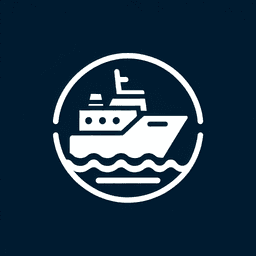
Freeboard Definition and Examples: Understanding the Basics
January 16, 2025
Freeboard
In maritime terminology, freeboard refers to the distance measured vertically from the waterline to the upper deck level, at the lowest point of sheer where water can enter the vessel. This measurement is crucial for ensuring the safety and seaworthiness of a ship.
The concept of freeboard is essential for sailors and maritime users as it directly impacts a vessel's stability and buoyancy. A higher freeboard generally indicates that a ship is less likely to take on water in rough seas, thus enhancing its safety. Conversely, a lower freeboard might suggest a higher risk of water ingress, which can be dangerous in adverse weather conditions.
Freeboard is a critical factor considered during the design and construction of ships. It is regulated by international maritime safety standards, such as those set by the International Maritime Organization (IMO), to ensure that vessels maintain adequate buoyancy and stability under various loading conditions.
Additionally, freeboard can affect a ship's speed and fuel efficiency. A vessel with a higher freeboard may experience more wind resistance, potentially impacting its speed and fuel consumption.
Understanding freeboard is vital for maritime professionals, as it influences decisions related to loading, navigation, and overall vessel operation. Proper management of freeboard ensures that ships can safely navigate through different maritime environments.
Understanding Freeboard in Maritime Context
What is Freeboard in Maritime Terms?
Freeboard is the vertical distance from the waterline to the upper deck level of a ship, measured at the lowest point where water can enter the vessel. This measurement is crucial for ensuring the safety and stability of the ship, as it indicates how much of the ship is above water.
How is Freeboard Determined?
The determination of freeboard involves measuring the distance vertically downwards amidships from the upper edge of the deck line to the upper edge of the related load line. This measurement is essential for compliance with maritime safety regulations, which dictate the minimum freeboard required for different types of vessels under various conditions.
What is the Function of Freeboard?
Freeboard serves as a safety margin, indicating the maximum depth to which a ship may be loaded. It accounts for factors such as the type of cargo, the waters to be navigated, and the season of the year. The freeboard deck is the deck below which all bulkheads are made watertight, ensuring the vessel's integrity in adverse conditions.
Difference Between Draft and Freeboard
While freeboard is the distance from the waterline to the upper deck, draft is the distance from the waterline to the bottom of the keel. Both measurements are critical for assessing a vessel's stability and load capacity, with freeboard providing an indication of how much of the vessel is above water, and draft indicating how much is submerged.
Why is Freeboard Important?
Freeboard is vital for maritime safety as it helps prevent water from entering the ship, especially in rough seas. It also ensures that the vessel remains buoyant and stable, reducing the risk of capsizing. By adhering to the prescribed freeboard, ships can safely navigate various maritime environments.




